The Evolution of Tesla Superchargers: Powering the Future of Electric Vehicles
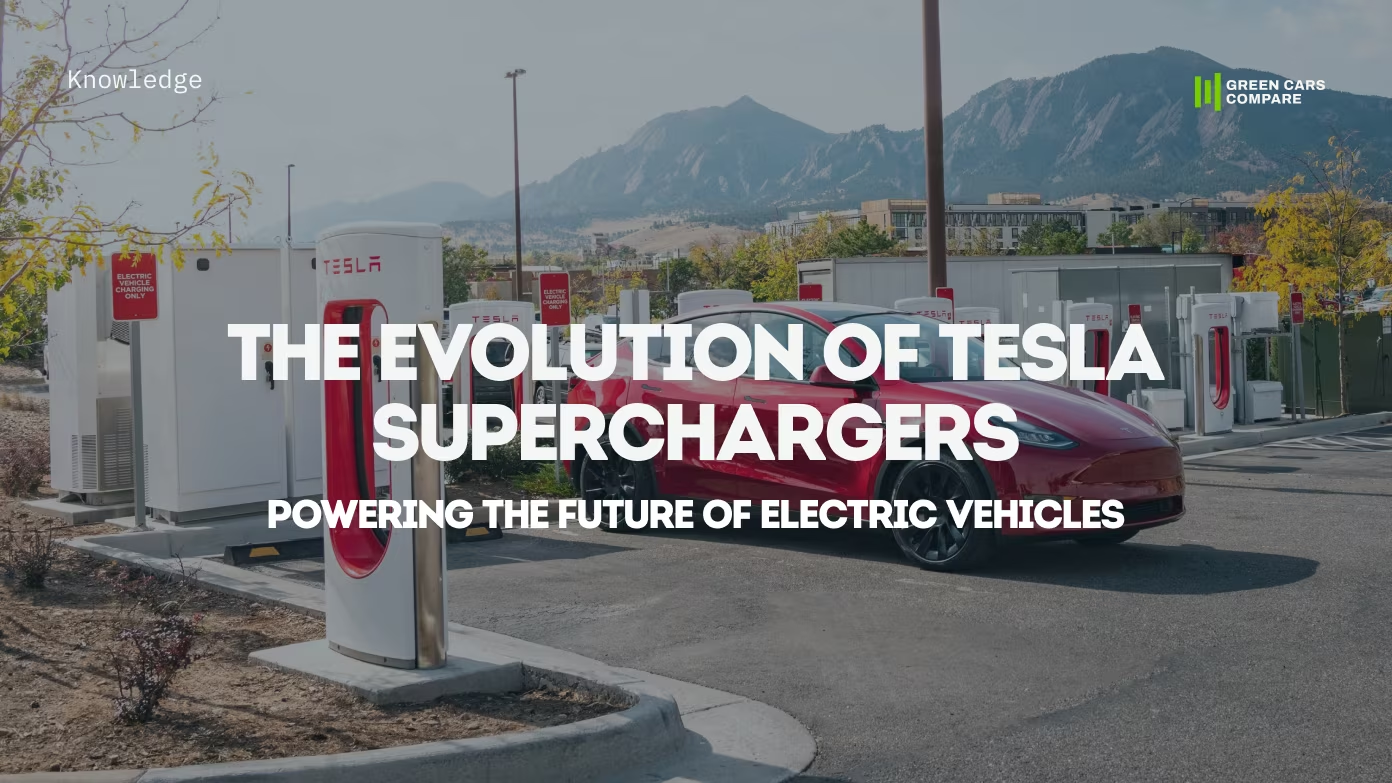
The EV industry is in high gear, with manufacturers racing to boost range, speed up charging, and enhance performance. A game-changer in this journey? Tesla Superchargers! These power-packed stations have reshaped the charging landscape, cutting down wait times and making long-distance EV travel a breeze. Join us as we explore the different Supercharger generations, their charging capabilities, regional variations, and the compatibility of these chargers with non-Tesla vehicles.
Table of Contents
History of the Revolution in EV Charging
Tesla’s impact on the EV industry goes beyond its groundbreaking Model S — it has also revolutionized charging technology. In 2012, alongside the Model S debut, Tesla introduced six Superchargers, offering free charging to owners. By 2013, this network had expanded to 50 stations across the U.S. and 14 in Europe, igniting a shift in EV infrastructure.
Fast forward to today, and Tesla operates over 60,000 Superchargers worldwide across the U.S., Europe, and Asia-Pacific. The year 2025 will mark another milestone as Tesla opens its Supercharger network to other brands in the U.S., redefining EV charging accessibility. Now, let’s dive into the evolution of Tesla Superchargers and explore the key differences between each generation.
Tesla Supercharger Generations: From V1 to V4
Tesla’s Supercharger network has evolved significantly since its debut in 2012, with four major updates over the years. In this section, we’ll examine what has changed with each generation and how these advancements have shaped the future of EV charging:
V1 Superchargers (2012-2016): The Start of a Revolution
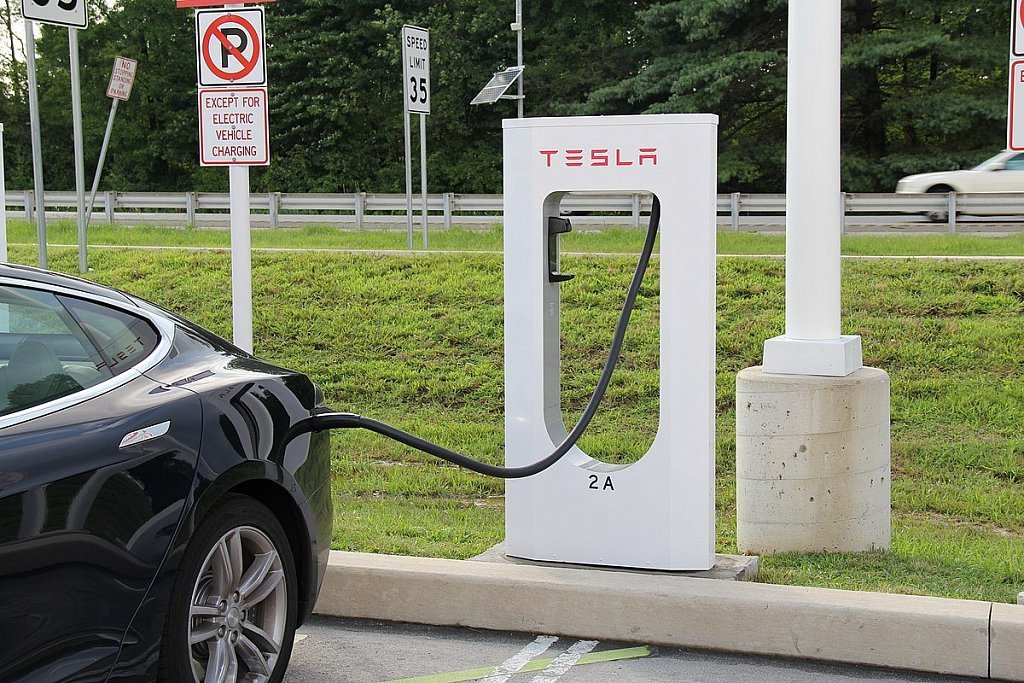
When Tesla introduced its first Superchargers in 2012, they completely changed the game for EV charging. Delivering up to 120 kW — and later upgraded to 135 kW — these chargers were far ahead of their time, especially considering that even today, some EVs still don’t support charging above 100 kW. At launch, the Model S could only handle 90 kW, but this was later increased to 120 kW, making long-distance travel more feasible.
While V1 Superchargers have since been replaced by more advanced versions, they laid the foundation for Tesla’s charging network and proved that EVs could be practical for everyday use.
While Tesla’s first Superchargers were revolutionary, they weren’t without flaws. A major limitation was the paired stall configuration, which meant that when two EVs charged at the same time, they had to share power. This often resulted in reduced charging speeds, making it less efficient when stations were busy.
Now, let’s take a look at how Tesla continued to push the limits.
V2 Superchargers (2016-2019): A New Era Begins
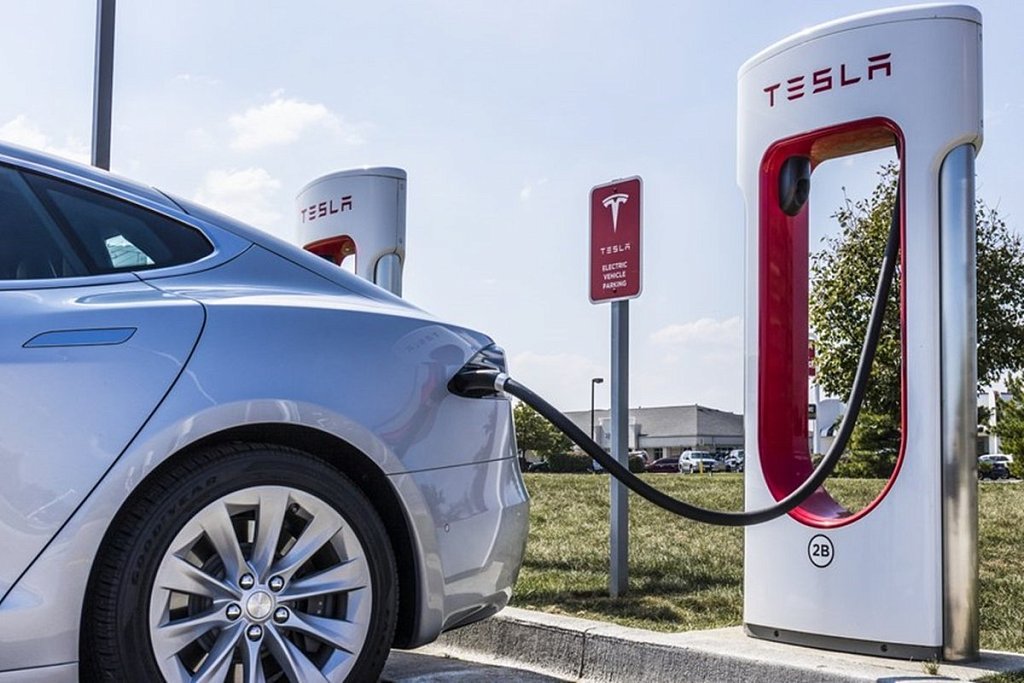
In 2016, Tesla introduced the V2 Supercharger, marking a significant step forward. The biggest improvement was power — initially offering a peak rate of 145 kW, later upgraded to 150 kW in 2019.
This wasn’t just about numbers — Tesla’s upd ated Model S and newly launched Model 3 could now take full advantage of these speeds, significantly cutting down charging times.
V2 Superchargers also got a fresh, modern design that remains familiar to Tesla owners today.
More importantly, this generation helped Tesla establish itself as the brand with the largest charging network, growing fr om 2,500 Superchargers in 2015 to over 10,000 by 2018.
However, one issue remained unresolved: the paired stall configuration still limited charging speeds when multiple cars were plugged in.
So, what did Tesla bring with the V3 update?
V3 Superchargers (2019-2023): Breaking Limits
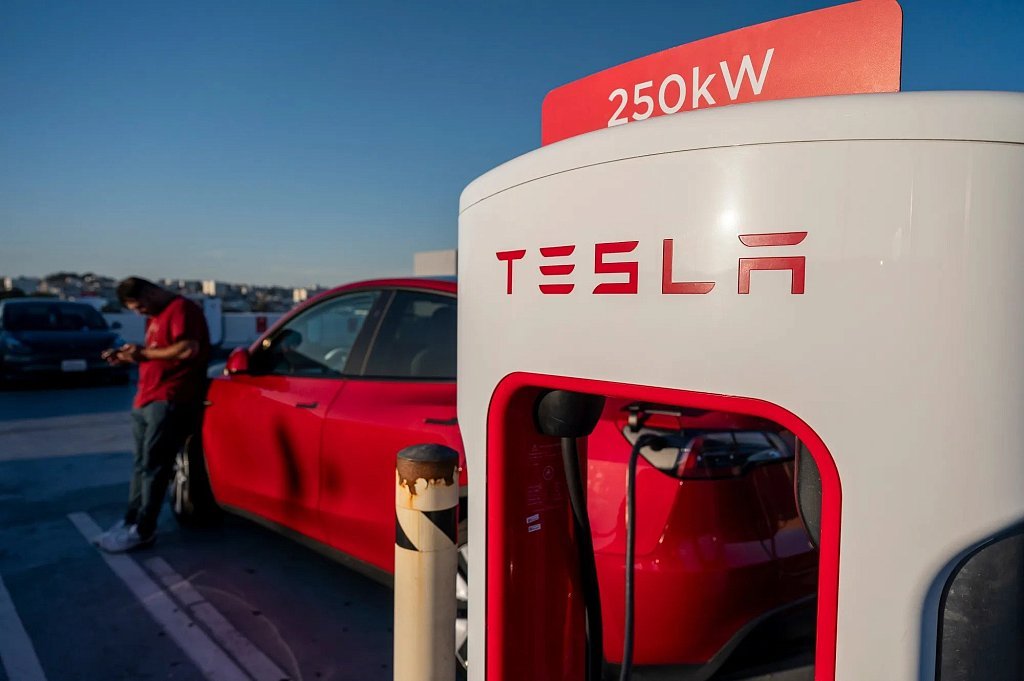
By 2019, Tesla had set new records in Supercharger expansion and was financially thriving. But why was it necessary to develop an entirely new generation of chargers? The answer lies in two key factors: competition and technology.
Other networks like Electrify America were gaining traction, and newer EVs could handle much faster charging speeds — making Tesla’s 145 kW V2 Superchargers outdated. In response, Tesla launched the V3 Supercharger, delivering a massive 250 kW peak output, which remains solid even today.
But how did Tesla achieve this? The key innovation was swapping air-cooled cables for liquid-cooled ones, improving efficiency and allowing for sustained high-power delivery. Another major upgrade was the elimination of the paired stall configuration, so each vehicle could charge at full power without being affected by others.
A revolution in charging? Absolutely. But what comes next? Let’s explore.
V4 Superchargers (2023-Now): The Future of EV Charging
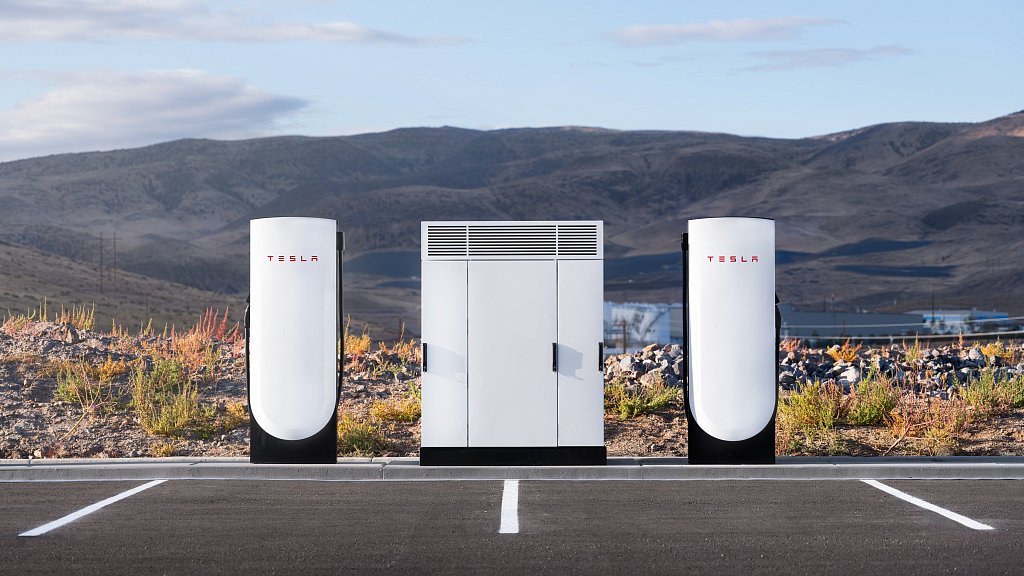
The EV landscape has undergone a rapid transformation since the early 2020s, driven by technological advancements and an increasing number of electric vehicle models. New battery architectures, including 800V+ architectures, have emerged, allowing for significantly higher DC charging speeds. Additionally, features such as Vehicle-to-Home (V2H) and Vehicle-to-Grid (V2G) have introduced new possibilities for energy management.
A major milestone for the industry is the planned expansion of Tesla’s Supercharger network to accommodate non-Tesla EVs by 2025. To support this move, Tesla has introduced the V4 Supercharger — a next-generation solution designed to meet the evolving demands of modern EVs.
The V4 Supercharger represents a major step forward in both design and performance. Its completely new structure with extended cables ensures compatibility with a wider range of vehicles. More crucially, Tesla has taken its charging power to the next level. Once capped at 250 kW, the V4 Supercharger in the U.S. now delivers an impressive 325 kW, with ambitions to reach 500 kW — cementing its place as one of the fastest charging solutions on the market. Supporting battery voltages fr om 400V to 1000V, it will accommodate everything fr om standard EVs to high-performance electric models.
As Elon Musk confirmed Tesla’s plans to implement V2G functionality in 2025, there is a strong possibility that V4 Superchargers will adopt this feature as well, allowing owners to earn revenue while charging and contributing to a more sustainable energy ecosystem.
Beyond the U.S., Tesla is also expanding the V4 across Europe and other parts of the world. Tesla deployed the first V4 Superchargers in Harderwijk, Netherlands, in March 2023 and continues expanding the network globally. Initially, these installations relied on existing V3 power cabinets, limiting them to 250 kW — hence the "V3+ Supercharger" designation. However, as Tesla upgrades its infrastructure, 2025 is set to mark a turning point in the future of high-speed EV charging. Exciting times ahead!
Regional Variations: USA, Europe and China
Tesla’s Supercharger network is widely deployed across the world, covering regions fr om North America to Asia-Pacific. In this section, we’ll explore the key differences that shape the charging experience for Tesla owners in the U.S., Europe, and China.
USA Superchargers Network
In 2012, the United States became the first country to host Tesla Superchargers, originally designed to support only Tesla vehicles using the NACS charging port. This exclusivity remained in place until 2024, when Tesla introduced compatibility for some non-Tesla EVs through a CCS Type 1 to NACS adapter.
What makes this transition even more significant is that most leading EV manufacturers in the U.S. have now committed to adopting Tesla’s NACS charging port for their future models.
By opening its Supercharger network to other brands, Tesla has solidified its position as the provider of the most extensive and seamless charging infrastructure in the country — far outpacing attempts by other charging networks.
Europe Superchargers Network
The expansion of Tesla’s Supercharger network in Europe progressed swiftly, reaching 14 stations by the end of 2013. Initially, Tesla vehicles and Superchargers in the region exclusively used the Type 2 (Mennekes) port.
However, with the launch of the Model 3 in 2018, Tesla transitioned to the CCS Type 2 charging port for all new models in Europe. This shift prompted an upgrade to Supercharger stations, equipping them with cables that meet modern European charging standards.
Notably, the first V4 Supercharger stations were installed not in the U.S. but in the Netherlands in March 2023. This move underscores Tesla’s ambition in the European market, wh ere it aims to strengthen its position and compete fiercely with other charge point operators.
China Superchargers Network
Tesla’s Supercharger network expanded to China in 2014. While detailed records of its evolution are scarce, it is likely that before 2017, Chinese Superchargers were identical to the European versions, utilizing Type 2 (Mennekes) connectors.
Later, Tesla adapted its Superchargers and vehicles in China to support both the older European Mennekes and the Chinese GB/T charging standards.
Tesla has confirmed plans to deploy V4 Superchargers in China in the near future. According to company representatives, these new stations will, like in other regions, offer charging access to non-Tesla EVs.
Compatibility With Non-Tesla Vehicles
Tesla’s commitment to improving the EV charging experience extends beyond its own customers, as demonstrated by its decision to open its extensive Supercharger network to non-Tesla EV owners.
The initiative first launched in Europe in 2022, allowing non-Tesla EV owners in the EU and the UK to use sel ect Supercharger stations. However, the transition faced challenges — Tesla's Superchargers are optimized for cars with charging ports on the rear left, but many other EVs have them in the front. As a result, non-Tesla EVs often occupied two charging spots instead of one, creating congestion. The good news is, Tesla is working on a fix with their upcoming V4 Superchargers, which will have longer cables to solve this problem.
In the U.S., Tesla granted Supercharger access to non-Tesla EVs in early 2024. They started by teaming up with a few key automakers like Ford and Rivian. Unlike in Europe, wh ere access was limited to specific locations, Ford and a few other brands gained full Supercharger access nationwide through a simple NACS adapter. Tesla plans to bring even more EV makers onto the network by the end of 2025, accelerating the shift toward Tesla’s NACS charging standard in the U.S.
Meanwhile, Tesla began testing non-Tesla Supercharger access in China in the spring of 2023. By 2024, more than 800 Supercharger stations were made available to all EVs, with V4 Superchargers set to launch for widespread use in 2025. Tesla’s continued expansion into multi-brand charging solutions is reshaping the global EV market, setting new benchmarks for accessibility and efficiency.
To access Superchargers anywhere in the world, download the Tesla app, create an account, add your EV, and set up a payment method — it’s that easy.
Regarding pricing, non-Tesla EV owners pay around 30–40% more per charge compared to Tesla owners. However, by subscribing to the Supercharging Membership for additional $12.99 (€12,99) per month, non-Tesla users can enjoy the same charging rates as Tesla owners.
Conclusion
Tesla’s Supercharger network has undergone remarkable evolution, transforming from a charging solution exclusively for Model S owners into the world’s largest EV charging network — soon to be accessible to all EV owners globally.
Since its launch in 2012, significant advancements have been made: charging power has increased substantially, user convenience has improved with each generation, and the network has expanded at an unprecedented pace. Today, Tesla’s Supercharger network consists of over 60,000 stations worldwide.
With competition in the EV charging sector intensifying, Tesla must remain proactive. To secure its top position, the company needs to accelerate the adoption of V4 technology and introduce strategic initiatives aimed at engaging a broader customer base.
We hope you now have a solid grasp of Supercharger generations, regional variations, and their game-changing move to welcome non-Tesla vehicles! Curious about charging your EV at a Supercharger? Visit our Charging Calculator page to estimate your charging time and learn more.








Discussion